Search Images
Browse Content (p. 1122)
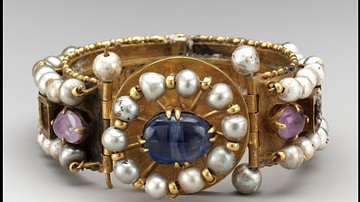
Image
Byzantine Jeweled Bracelet
Gold bracelet decorated with silver, pearls, amethyst, sapphire, glass, and quartz, 500-700. 3.8 x 8.2 cm.
Metropolitan Museum of Art, New York.
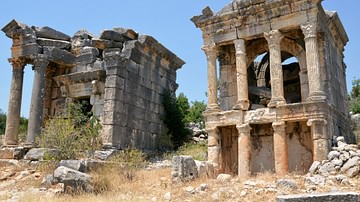
Image
Roman Temple-tombs
Two monumental temple-tombs in the ancient city of Imbriogon in Cilicia (modern-day Turkey) dating to the second and third centuries CE. The overall design of the tombs with columns and a standard entablature produces the effect of small...

Image
Byzantine Steelyard Rod with Weight
A Roman invention, the steelyard (or stilyard) balance employed sliding weights along an etched arm to determine the mass of goods, much like the modern beam balance. The Byzantine balance pictured dates from the 5th to 7th centuries CE...
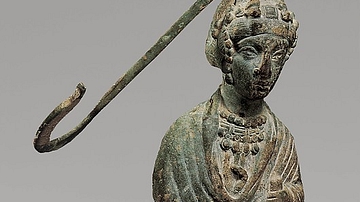
Image
Steelyard Weight with a Bust of a Byzantine Empress
Dating to 400-500 CE, this steelyard weight is made from copper alloy and filled with lead. It measures 24.2 x 11.5 x 7.1 cm and weighs 5664 grams. The hook is approximately 23 cm in length and weighs 176 grams. (Metropolitan Museum, New...

Image
Byzantine Marriage Ring
This Byzantine gold marriage ring dates to the 3rd to 4th centuries CE. The ring measures 56 mm in circumference and the bezel measures 10x10 mm. Weight: 4.5 grams. (Metropolitan Museum, New York)
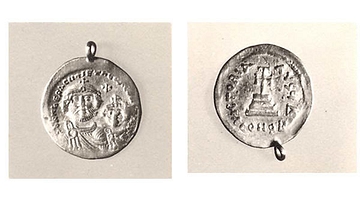
Image
Solidus of Heraclius
Solidus depicting Heraclius, who reigned from 610 CE to 641 CE. Discovered in Qasr-i Abu Nasr (Iran), it is made of gold and measures 1.9 cm. (Metropolitan Museum, New York)
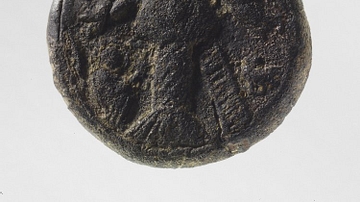
Image
Pilgrim Token
This terracotta pilgrim token features a saint flanked by angels; a monk holding a censer, and a palm branch. Made in Syria 6th-7th century CE. Measures 34.5 mm. British Museum, London
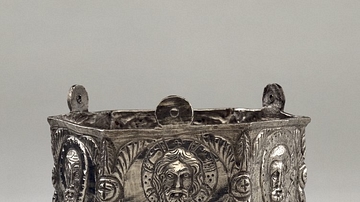
Image
Byzantine Silver Censer
Silver censer made in Constantinople (now, Istanbul) between 602-610 CE. Found near Acheripoietos Monastery, Cyprus. Depicts Jesus Christ, Mary, and Saints Peter, Paul, John the Evangelist, and James, each in a border of palms. (British...
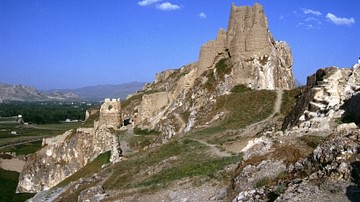
Image
Tushpa/Van
The citadel of Tushpa (Van), capital of the ancient kingdom of Urartu (9th-6th century BCE) and later Armenian kingdoms. Lake Van, eastern Turkey.
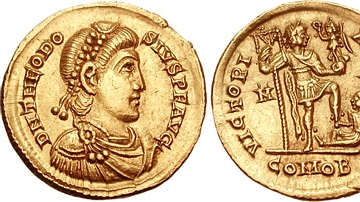
Image
Theodosius I Solidus
Solidus coin struck in 395 CE depicting Roman emperor Theodosius I (r. 379-395 CE). From the White Mountain Collection.